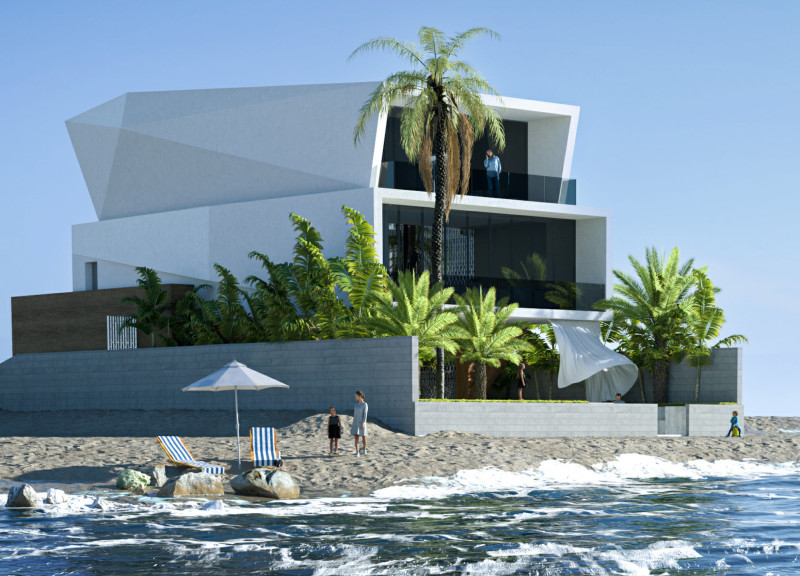5 key facts about this project
The design is particularly notable for its emphasis on connecting indoor and outdoor environments, fostering a sense of unity with nature. Large expanses of glass characterize the facade, allowing ample natural light to penetrate the interiors while providing unobstructed views of the external landscape. This strategic use of glazing not only enhances the visual experience but also promotes energy efficiency by reducing the need for artificial lighting during the day.
From a functional perspective, the project is organized in a manner that prioritizes user interaction and accessibility. The layout features open-plan spaces that encourage social interaction and collaboration. Key areas such as communal gathering spaces, private offices, or living spaces are thoughtfully designed to balance privacy with communal access, catering to the diverse needs of its users. This arrangement enhances the overall user experience, ensuring that the environment is both comfortable and versatile.
One of the more unique design approaches adopted in this project is the integration of sustainable materials and practices. The architects have chosen a palette that includes concrete, timber, glass, steel, and natural stone. Each material has been selected not only for its aesthetic qualities but also for its durability and environmental impact. For instance, timber is used to introduce warmth to the space while serving structural purposes, and natural stone is applied as cladding to blend the building seamlessly with its surroundings. Furthermore, elements such as green roofs or vertical gardens may have been incorporated to enhance biodiversity and promote local flora.
The project's response to environmental considerations is evident, as it employs passive design strategies to minimize energy consumption. Features such as shading devices, natural ventilation, and strategic orientation exemplify the architects’ commitment to energy efficiency, ensuring that the building remains comfortable throughout the year regardless of the climate conditions. This conscientious approach aligns with contemporary architectural trends that seek to reduce the ecological footprint of structures and promote sustainable living practices.
Additionally, the building includes specific spaces designed for [insert details about unique functions or community aspects like workshops, events, or public engagement areas], which highlight its role as a community hub. These spaces are designed with flexibility in mind, allowing them to serve multiple purposes, from workshops to social gatherings, thus reinforcing the building’s commitment to community engagement.
Visual interest is further enhanced through careful attention to detail in the design elements and finishes. Each area showcases thoughtful craftsmanship, from the selection of furnishings to the layout of landscaping, contributing to an overall atmosphere that encourages both creativity and relaxation. The integration of art installations or local cultural references can also be noted, adding a layer of depth and authenticity to the project.
In summary, this architectural endeavor goes beyond traditional design norms by fostering a deep connection with its environment while offering a multifunctional space tailored to meet the needs of its users. By exploring aspects such as the architectural plans, architectural sections, and architectural designs, interested readers can gain a more in-depth understanding of the innovative ideas and details that define this project. This analysis highlights how architecture can serve not only as a physical shelter but as a catalyst for community building and sustainable practices in design. Readers are encouraged to delve into the project presentation to appreciate the full scope of thoughtfulness and creativity embedded within this architectural work.


























